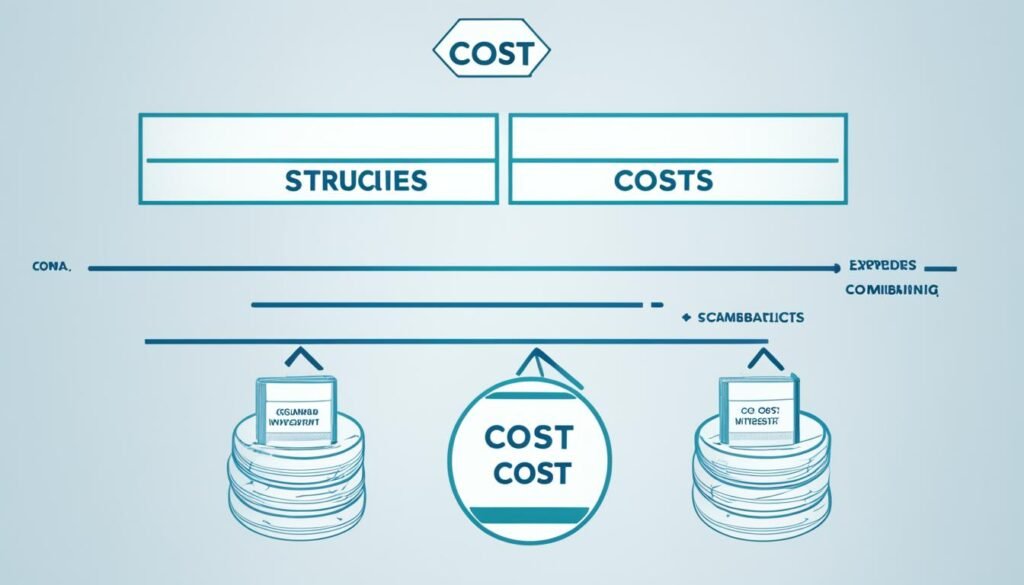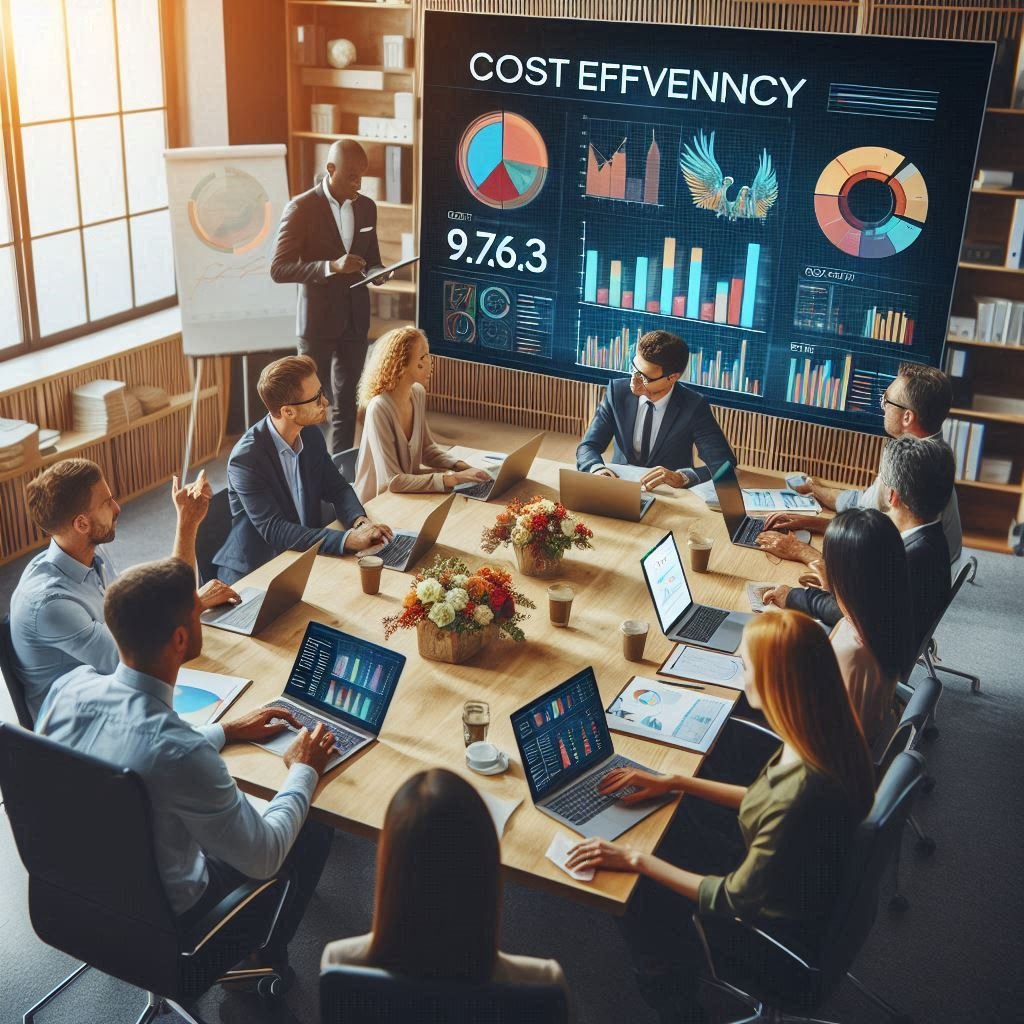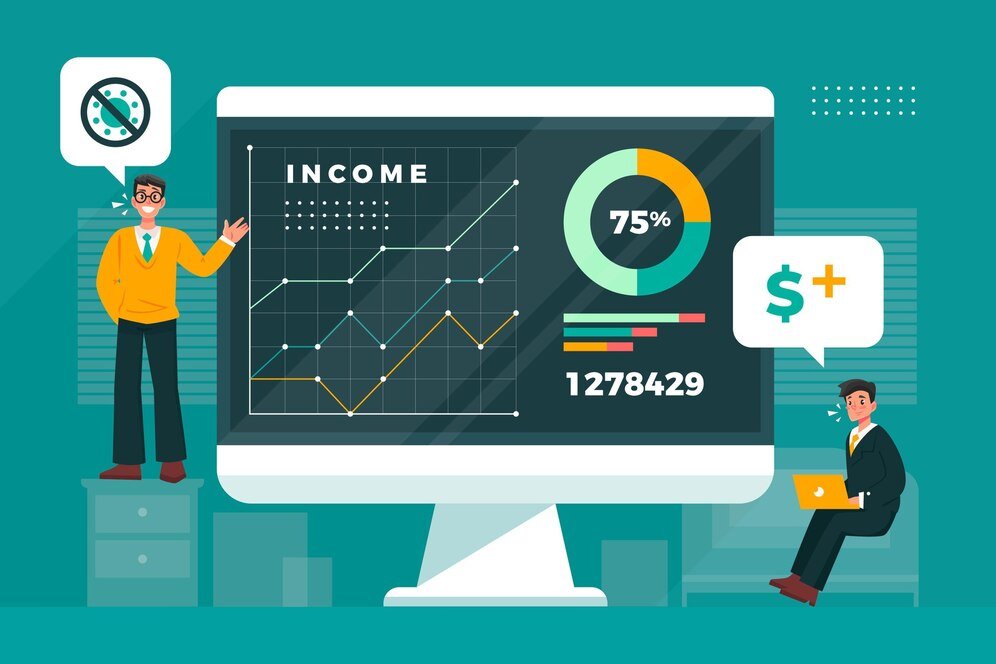Cost Structure Analysis Knowing how your business’s Cost Structure affects everything is key to success. The Cost Structure is a vital part of the Business Model Canvas. It’s a tool for strategic management that helps describe and analyze a business model. This article will cover the importance of Cost Structure in the Business Model Canvas, the various types of cost structures, and how to analyze and optimize it. It will also show how to match the cost structure with your business strategy.
Table of Contents
Understanding Cost Structure Analysis in the Business Model Canvas
In the Business Model Canvas, the Cost Structure Analysis is all about the expenses a business has to pay to run and give value to its customers. This includes fixed costs (like rent, insurance, and loan payments) and variable costs (such as raw materials, labor, and commissions). It’s key to know and manage your costs well, as they affect your profits and how long your business can last.
Cost Structure Definition
The Cost Structure Analysis of a business model talks about the main costs it faces while running under that model. It covers all the expenses a company has to pay to make, market, and deliver value to its customers.
Cost Structure Analysis Role in the Business Model Canvas
In the Business Model Canvas, the Cost Structure Analysis building block is crucial for the overall business strategy. It guides decisions on how to develop the value proposition, what resources and activities are key, and how to connect with customers. All these affect the costs a business must handle.
| Industry | Average Fixed Cost % | Variable Cost Ratio |
|---|---|---|
| Manufacturing | 65% | 0.45 |
| Service | 35% | 0.65 |
| Technology | 40% | 0.55 |
The table shows how different industries have different cost structures. Knowing these can help businesses see how competitive and sustainable their costs are.
Types of Cost Structure Analysis
Understanding the different types of cost structures is key for managing your business. Businesses may face various cost structures. These include:
Fixed Cost Structure Analysis
Fixed costs don’t change much, no matter how much you produce or sell. Examples are rent, salaries, insurance, and overheads. Companies with more fixed costs might see bigger profits when they sell more.
This is because they have more operating leverage. This means they can make more money as sales go up.
Variable Cost Structure Analysis
Variable costs change with how much you make or sell. These are things like raw materials, making the product, and sales commissions. Companies with more variable costs can cut costs when times are tough.
But, they might not make as much money as their sales go up.
Knowing the difference between fixed and variable costs helps with pricing and finding ways to save money without lowering quality.
“Identifying excessive expenses in financial statements is important to optimize cost structures and improve profitability.”

Cost allocation is key in cost structures. It spreads costs to things like products, projects, or customers fairly. This lets companies see costs per item or customer.
By looking at their costs and how they’re spread out, companies can make smart choices. This helps them make more money, work better, and match their costs with their business goals.
Analyzing Your Business’s Cost Structure Analysis
Understanding your business’s costs is key to knowing its financial health and finding ways to improve. Here are the main steps to follow:
Identifying Cost Drivers
Start by sorting your expenses into fixed costs and variable costs. Fixed costs don’t change, like rent, insurance, and steady employee salaries. Variable costs change with how much you produce or sell, like materials, labor, and shipping.
Knowing the mix of fixed and variable costs helps you decide on staffing and production levels. This knowledge boosts your profit-making decisions.
Evaluating Cost Efficiency
Checking your costs often can show where to cut or improve. A cost-volume-profit (CVP) analysis shows how sales changes affect your profits. It helps figure out the best production levels when your revenue and costs are equal.
Understanding fixed and variable costs helps with break-even calculations and profit assessments. Spotting direct and indirect costs can lead to savings, like better supplier deals or efficient buying.

“Regularly reviewing and analyzing cost structure can help identify areas for cost reduction or optimization.”
Cost Structure Analysis
Doing a deep dive into your cost structure can reveal a lot about your business’s money side. It helps spot areas to make things better. By looking closely at your costs, you can:
- Classify costs into fixed and variable to understand how they change.
- Find out what drives costs and check how efficient your operations are.
- See how fixed and variable costs affect your profit.
- Work on making your cost structure better and boosting financial strength.
Fixed costs, like rent and salaries, stay the same even when you make more or less. On the other hand, costs like materials and labor change with how much you produce. Knowing how these costs work together is key to smart business choices.
| Cost Component | Example Expenses |
|---|---|
| Fixed Costs | Rent, salaries, equipment depreciation |
| Variable Costs | Direct materials, production supplies, direct labor |
By keeping an eye on both fixed and variable costs, you can figure out your total costs. This helps you make your business more profitable. The total cost is found by adding fixed costs to the variable costs per unit times the number of units made.

This image from freepik
Looking into your cost structure deeply can show you how your business model affects your finances. This lets you make smart choices, set the right prices, and plan for growth. Good cost analysis means looking at all costs, keeping your data right, and avoiding guesses.
“Accurate data is essential for effective cost structure analysis to prevent misinformed conclusions.”
Optimizing Your Cost Structure
After analyzing your costs, you can make changes to save money and run more efficiently. Here are some ways to do this:
Cost Reduction Strategies
Find and cut expenses you don’t really need. Talk to suppliers to get better. Outsource tasks that aren’t key to your business. Making your operations more efficient can also save money. For instance, Toyota used the Toyota Production System (TPS) to cut costs and become a top car maker.
Investing in Cost-Saving Technologies
Using automation, tools to make processes better, and data analytics can cut down on manual work. This makes things more efficient and helps you see where costs come from. Walmart focused on cutting costs and making their supply chain more efficient. This let them offer low prices to customers while still making good profits.
Keep an eye on your costs and adjust them to fit your business goals. Regular checks can show where you can do better. This keeps your operations running smoothly and helps you stay financially strong.

“Through process optimization and supplier negotiations, a manufacturing company reduced the cost of raw materials by 20%, impacting their cost structure positively.”
| Cost Reduction Strategies | Benefits |
|---|---|
| Renegotiating supplier contracts | Securing better pricing and terms for cost savings |
| Implementing automation and process optimization | Streamlining processes and reducing labor costs |
| Adopting data analytics and business intelligence | Gaining visibility into cost drivers and optimization opportunities |
Aligning Cost Structure with Business Strategy
It’s key to match your costs with your business goals for lasting success and profit. Knowing how your costs and goals connect lets you:
- Find ways to make your costs work better for your goals.
- Put your resources where they can best help you achieve your strategy.
- Stay ahead by using your costs to give value to customers.
Looking at your costs, think about both fixed costs (like rent, salaries, and interest) and variable costs (like materials, labor, and utilities). How these costs mix affects your profits and how flexible you can be.
A high-fixed-cost setup means small sales changes can greatly change profits. On the other hand, a low-fixed-cost setup means big sales changes don’t much affect profits.
To match your costs with your strategy, use different analysis tools. Tools like value chain analysis and benchmarking help you see what costs are key, check how efficient you are, and decide where to use your resources best.
| Strategic Goal | Cost Structure Alignment |
|---|---|
| Cost Leadership | Work on cutting costs, use economies of scale, and lean manufacturing. |
| Differentiation | Put money into innovation and better customer service, but keep costs competitive. |
| Diversification | Balance fixed and variable costs across units, use shared resources to cut costs. |
Matching your costs with your goals gives you a lasting edge, boosts profits, and sets you up for long-term success.
“The essence of strategy is choosing what not to do.” – Michael Porter
Conclusion
The Cost Structure is key to the Business Model Canvas. It greatly affects your business’s money matters and success. By looking at your costs, finding what drives them, and making changes, you can make your business run better and more profitably.
This article has shown you how to make the most of your business. It doesn’t matter if you want to cut costs, invest in new tech, or match your costs with your business goals. Knowing your costs well is vital for smart decisions and moving your business ahead.
The Cost Structure is more than just about money. It’s a strategic tool to help you reach your goals and beat your competitors. By using the advice and tips given here, you can manage your costs better. This will lead to a brighter and more stable future for your business.




One Comment on “How to Analyze and Optimize the Cost Structure Analysis in Your Business Model Canvas 2024”